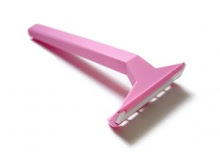
Before adding to your wardrobe, evaluate what's in it. Many women have wardrobes filled with items that were 'too much of a good deal to pass by' that still have tags attached. Add those to the 'if I lose 10lbs I'll fit into that' and you have an overflowing wardrobe! A good rule of thumb is, if you haven't worn it for one year, it shouldn't be in your closet. Items in good condition can be taken to consignment stores or auctioned online with Ebay. While you may not get back what you paid out, it's something and will give you a bit of fun money to shop with soon.
Set a monthly or yearly clothing budget...and stick to it.
If you have friends, family or work colleagues with similar clothing sizes, tastes and/or budgets, why not arrange a clothing swap party? Each guest can bring with them a few items of clothing that they can exchange with other guests. Not only will this trade enhance your wardrobe, it will allow you the chance to mix with friends you may not see very often.
Before buying an item of clothing, do your research! Don't just head to the mall with your credit card and buy, buy, buy. Look the item up on the internet to see how much it's being sold for. Many online retailers, catalogue companies and outlets sell items at a reduced rate. Not only will you save money this way, you'll avoid the lines at the checkout too!
Just before you head to the checkout with any purchase, ask yourself 'Is this necessary?' If you can't say yes, then you're best placing the item back on the rack.
Keep your lifestyle in mind when you're purchasing clothes. Most people wear only 25% of their wardrobe regularly. If on a day-to-day basis you dress in jeans and a t-shirt, there seems little point in having 20 dresses in your closet.
Don't go overboard. Rather than buy a brand new set of clothes each season or year, try to update the items you have already. Add accessories such as jewellery, handbags, scarves and hats to keep your look up to date.
Go 'au naturel'. Natural fibers are always in fashion and they last longer too! Investing in linen and wool items is always a good idea.
Does the item pass the comfort test? Buy clothes because of how they fit, not because of the size on the label. If they aren't comfortable, pass them by. Purchasing them will only mean you've wasted your cash.
Keep it basic and flattering. Purchasing classic styles that flatter your figure is more important than following a (possibly unflattering) trend. Trends come and go, but classics should make up your staple wardrobe. To keep your look updated, use accessories to keep up-to-date with trends.
Keep coordinated. Ensure any new items of clothing you buy will work with items you already have in your wardrobe. I tend to stick to a small palette of colours to keep it simple.
Washing instructions aren't just to be read on laundry day. Before buying an item, find out how it's cleaned. Do your best to avoid dry clean only items as these will be more expensive to clean.
Thrift shops, consignment stores, flea markets, garage sales and online auctions are loaded with great clothing finds - at great prices. If your budget is tight but you prefer designer labels, you might find yourself a bargain and a fun day of treasure hunting.
Wholesalers are also worth considering if you have friends also interested in saving money. Items such as childrens clothing, underwear, socks and scarves are good purchases to make in this way. Your cost per item is reduced by buying in bulk.











